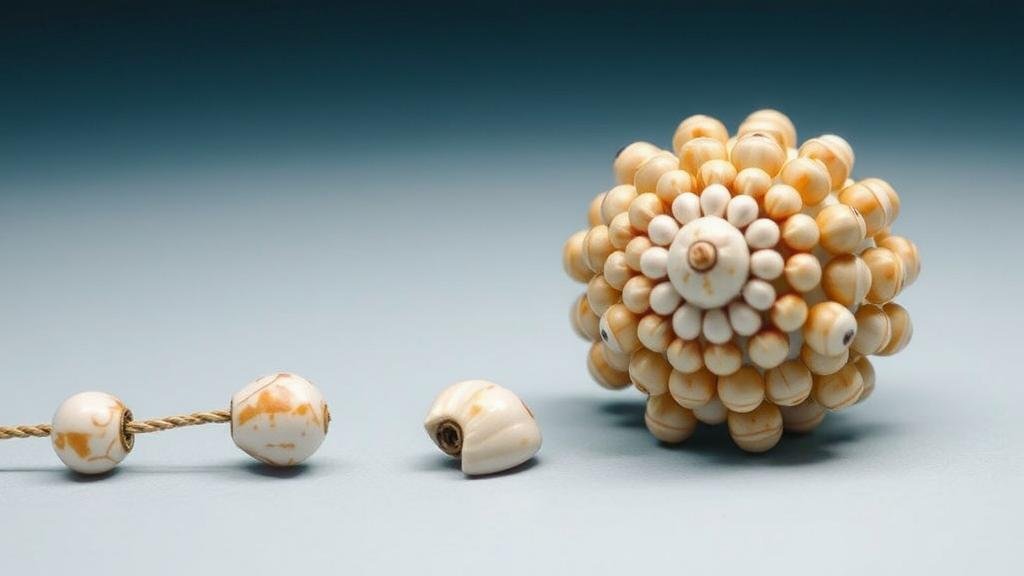Unearthing Shell Beads and Decorations in Coastal Midden Sites
Unearthing Shell Beads and Decorations in Coastal Midden Sites
Coastal Midden sites, often rich in archaeological significance, provide a glimpse into the complex interactions between ancient human societies and their marine environments. Among the most notable artifacts found in these sites are shell beads and decorations, which serve not only as personal adornments but also as indicators of trade, cultural practices, and social structures within these communities. This article explores the significance of these finds, the techniques employed in their extraction, and their broader implications within archaeological research.
The Significance of Shell Beads
Shell beads have been utilized by various cultures around the globe for millennia. In coastal midden sites, these beads serve multiple purposes–functioning both as ornamental objects and as indicators of socioeconomic status. For example, the presence and type of shell beads can suggest the wearer’s cultural affiliations and trade relationships. Research indicates that intricate shell bead manufacturing was prevalent among the Native American populations of the Pacific Northwest, demonstrating a rich tradition of craftsmanship that was tied to their identity and heritage.
Identifying Shell Bead Types
Shell beads can be constructed from a variety of mollusk species, each contributing unique characteristics to the finished product. following are common types of shell beads found in coastal midden sites:
- Olive Shell Beads: Derived from the olive shell, these beads are typically smooth and often used in necklaces.
- Scallop Shell Beads: Recognized for their fan-like shape and often used in ceremonial attire.
- Conch Shell Beads: Known for their vibrant colors, conch shells were often used by various cultures across the Caribbean and Central America.
Each bead type provides crucial information regarding the geographical reach of trade networks and cultural interactions among prehistoric peoples.
The Archaeological Context of Midden Sites
Coastal middens are found in locations where communities historically disposed of organic waste materials, often accumulating over time. These sites are valuable to archaeologists due to their layered deposits, which can reveal distinct phases of human occupation and activity. For example, the famous Shell Mound at the Calusa archaeological site in Southwest Florida showcases multiple layers of shells, pottery, and beads, illustrating changes in diet and social behaviors over centuries.
Extraction and Analysis Techniques
The process of excavating shell beads and decorations from coastal middens involves meticulous techniques to avoid damaging these delicate artifacts. Archaeologists employ various methodologies, such as:
- Stratigraphic Excavation: This technique involves digging through layers of sediment to understand the chronological sequence of human activity.
- Floatation Techniques: Used to separate lighter materials, such as shell beads, from heavier sediments.
- Geochemical Analysis: A method for examining the chemical composition of beads to assess trade origins and material sourcing.
These techniques ensure that researchers can accurately interpret data and make informed conclusions about the sociocultural dynamics at play in these ancient communities.
Real-World Applications
Understanding shell beads extends beyond academic interest; it has implications for contemporary cultural identity and heritage preservation. For example, modern Indigenous communities may use knowledge gleaned from archaeological findings to revitalize traditional crafts and cultural practices. Also, this research contributes to broader discussions on the importance of marine resource stewardship, highlighting sustainable practices predating modern environmental conservation efforts.
Actionable Takeaways
Unearthing and analyzing shell beads in coastal midden sites not only provides insights into the past but also helps to inform current practices in archaeology and cultural heritage. Key points include:
- The artifacts serve as valuable indicators of trade networks and cultural interactions.
- Advanced excavation and analysis techniques enhance our understanding of ancient societies.
- Findings resonate with contemporary cultural revitalization efforts and environmental stewardship initiatives.
As archaeological methodologies evolve, the significance of shell beads within coastal midden sites will continue to illuminate the interconnectedness of human cultures and their environments.



